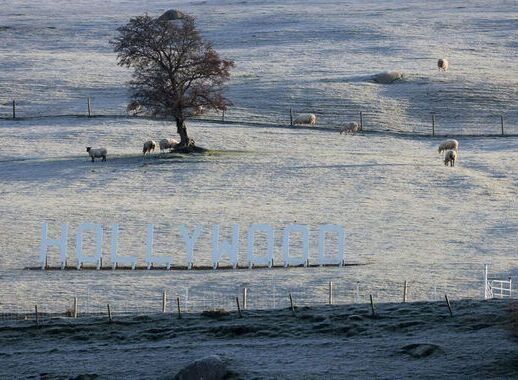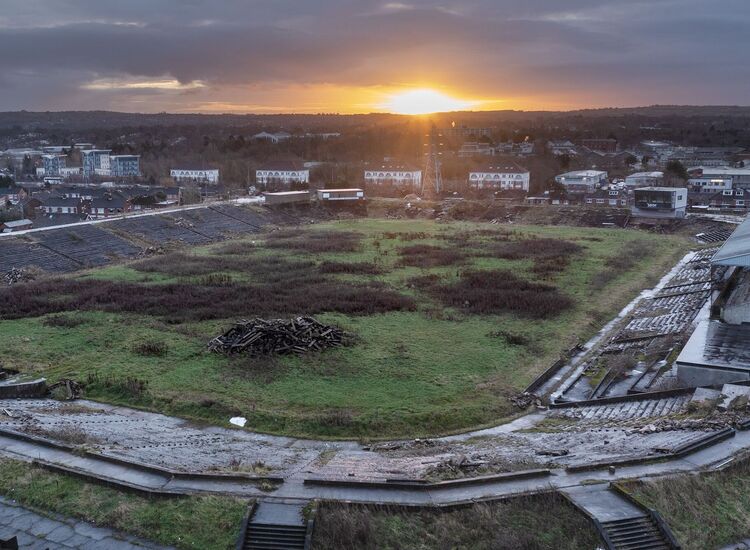James and Moira Doherty, the founders of Sliabh Liag Distillers.
By Peter McDermott
“If it’s scary and exciting, you should do it, as far as I’m concerned.”
So says businessman James Doherty.
He was referring specifically in his own regard to the idea of forming the first whiskey company to operate legally in County Donegal since 1841.
“We’ve brought back the Ulster style, which was peated,” said the co-founder and managing director of Sliabh Liag Distillers, who will speak at next week's Golden Bridges event .
Five years ago, Doherty and his wife Moira, a native of Bulawayo in Zimbabwe, relocated from Hong Kong with the three younger of their four children. It was a big move. Now they are seeing results, with a rollout in the United States of their Silkie brand this year.
“I always wanted to come back here,” he said of southwest Donegal, which his parents left in the 1960s for London’s suburbs, where they raised a family. “I’ve always viewed this as my happy place. I’ve always felt most connected.”
Distilling is in the family, too; his grandmother gave to him a recipe of his grandfather’s. It’s filed away for now, an artifact from an era when there were two parallel illicit industries — one involved in the making of poitín, the other whiskey.
“If you look at Donegal in the late 1800s, early 1900s, more illegal distillers in this county than any other county in Ireland, and they were all making a smoky style of whiskey.
“Our vision was to reclaim the distilling tradition of Donegal. It’s kind of died away really,” he said. “And moreover to make Donegal to Irish whiskey what Isla is to Scotch whisky.
“It’s really gaining traction now because people are intrigued by the idea of a smoky Irish whiskey,” he said. “They haven’t had the chance to get one of those for a long, long time.”
Isla’s style is “very, very peat dominant” and is synonymous with that in the world of Scotch whisky. But it tends to be “carbolic, iodine-y, or any of those kind of flavors” according to Doherty.
“Whereas what we’ve done in the Silkie is we’ve blended in peated Irish whiskey that gives you a dry smokiness, which is more like the smell of a proper turf fire or your granddad’s pipe. It has a sweet tobacco aroma,” he added. “So it’s much, much more approachable.”
When the company says its product is “challenging,” it means compared to what people are used to with Irish whiskey; but by Scotch standards, it’s “very, very approachable.”
And what does Doherty say, more generally, when he’s asked what’s the difference between Irish whiskey and Scotch whisky? “The first thing is we started it,” he said, with a laugh. “I would argue that distilling started in Ireland and went to Scotland, rather than the other way around.
“In the generality of it, Scotch whisky tends to be double-distilled and Irish whiskey tends to be triple-distilled, but that’s not true of all of them. The perception is that Scotch whiskey is peated, in the main, but actually only 15 percent is — that’s the way the way blends taste [so] people associate peating with Scotch. And they associate Irish with the Jameson taste, which has been the dominant one for the last 60 years or so.”
The trade war with Britain in the 1930s cut off the Commonwealth markets and one spinoff of that was the consolidation of the whiskey industry over time, so that by the 1980s there were two companies on the island, Bushmills and Midleton, which makes Jameson.
“Now you’re seeing a resurgence of smaller guys like ourselves,” Doherty said, “And obviously we’re all trying to be true to our place and everybody is reclaiming those tastes that were there before.”

Ardara Distillery in County Donegal.
Sliabh Liag, though, is not a craft or boutique business but rather “an ambitious plan to develop with the vision of an international spirits company that’s based in southwest Donegal.” Its distillery is the same size as the Teeling Whiskey Distillery in Dublin, for instance.
That means finance, lots of it,
The company early on got local backers, who wanted to see industry survive and thrive in the area. “We’ve just raised £2.3 million on crowdfunding platform in the UK,” Doherty said. Sliabh Liag raised an additional €5 million from other backers in the drinks industry and €3 million from Asahi, the Japanese beverage company.
It means patience, too.
People made poitín one day and sold it the next. “It was kept in the barrel as a storage vessel rather than to age and mature it,” Doherty said. Illicitly-made whiskey spent longer in the barrel, but generally not close to the time that is required these days for it to qualify as the real thing.
“We can’t sell it for three years minimum,” Doherty said. “Realistically, you’re going to leave it in a barrel much long than that. For single malts, you’re going to leave it in there for 8-10 years.” For other types, it’s 5-8 years.
“For us, it’s a generational thing,” he said. “We really want this to be a business we can hand on to our children.” The investors, likewise, are thinking long term, 10 years at the very least.
A tax inspector in the late 1800s once declared that most farmers in Donegal were actually full-time distillers, and part-time farmers, although they claimed it was the other way around. James Doherty has served a long apprenticeship on the road to being a full-time distiller himself. He grew up in Woking, near Guildford. While studying for his engineering degree at university in London, he took a year out in 1990 to grow tea and coffee in Africa. It was there he met Moira, who is a midwife by profession. After graduation, he went to work in Malawi, in central Africa, for six years.
Back in Britain, Doherty was recruited by William Grant & Sons, perhaps the biggest family-owned maker of spirits in the UK. He spent years as a world-traveling sales executive for the company, and was eventually appointed to the board. Seeking new challenges, he joined a couple of other leading companies in the field, one of which brought him to Hong Kong.
The Dohertys’ first-born lives in the UK and is the mother of two daughters, but the move back to Ireland meant a huge readjustment for the younger children — from learning Mandarin in a city that’s on 24 hours to full-immersion in the Gaeltacht in rural southwest Donegal. But they’ve gotten through the Leaving Cert and are on to college level.
Meantime the Dohertys have been bringing their different talents to build Sliabh Liag. Moira retrained as a distiller, and her practical hands-on experience, they believe, complements James’s knowledge gained in sales, distribution and branding at the top levels of the industry. “We’re in about 25 countries now,” he said.
“She’s a remarkably adept distiller,” James Doherty said about his wife. “She’s amazing with gin and vodka.
“We were picking seaweed one day [in Donegal] and Moira said ‘Did anybody use this in gin?’” he remembered.
The idea led to a gin they would eventually make, but more importantly it was their “Well, why not?” moment. “We should do this,” he said, summarizing the couple’s mindset at the time. “We can do this ourselves.” The combination of her lateral thinking and his wanting to return to his ancestral place inspired them to found Sliabh Liag Distillers.
When they’ve more time they’ll try out his grandfather’s recipe, which was from the poitín side of things, both for the fun of it, but also to honor the illicit distilling heritage, which they’re “bringing back to life” in the modern context.
“There’s a romantic notion to it,” James Doherty said. “But at the end of the day, Moira and I are hard-nosed thinkers about it.”








